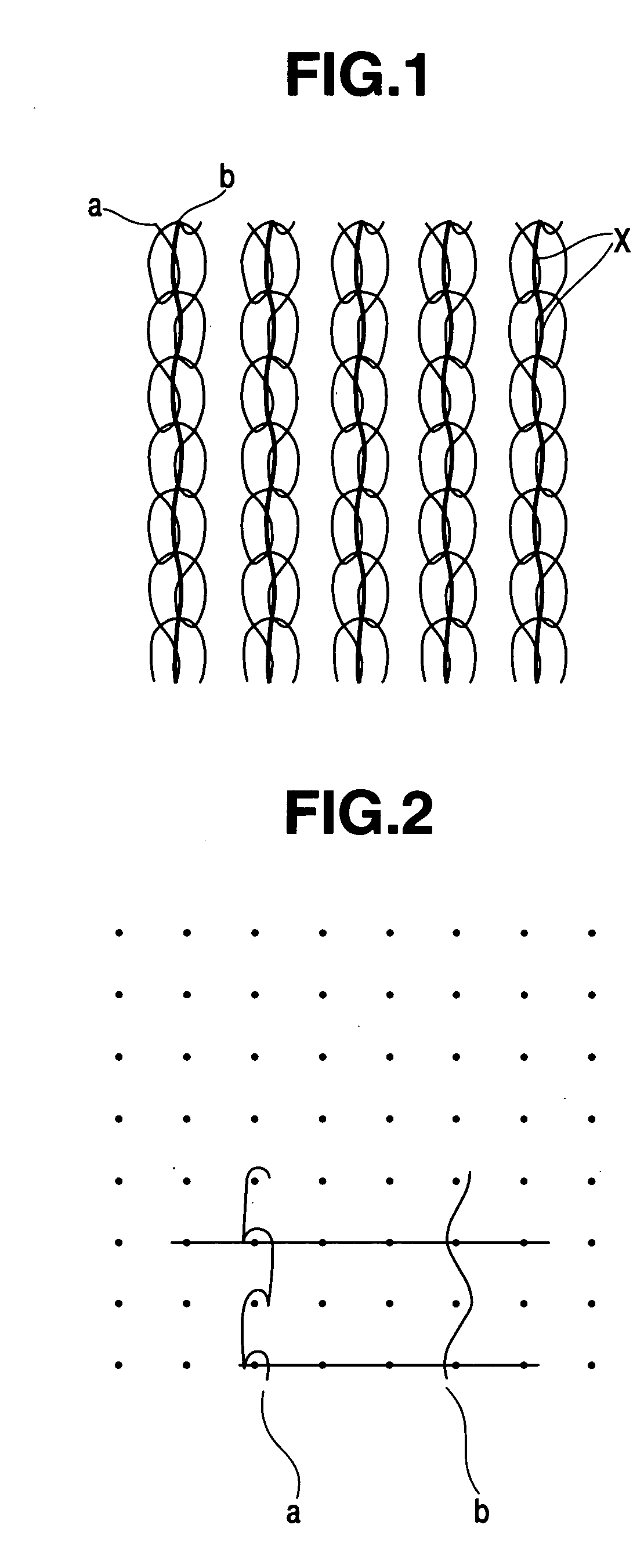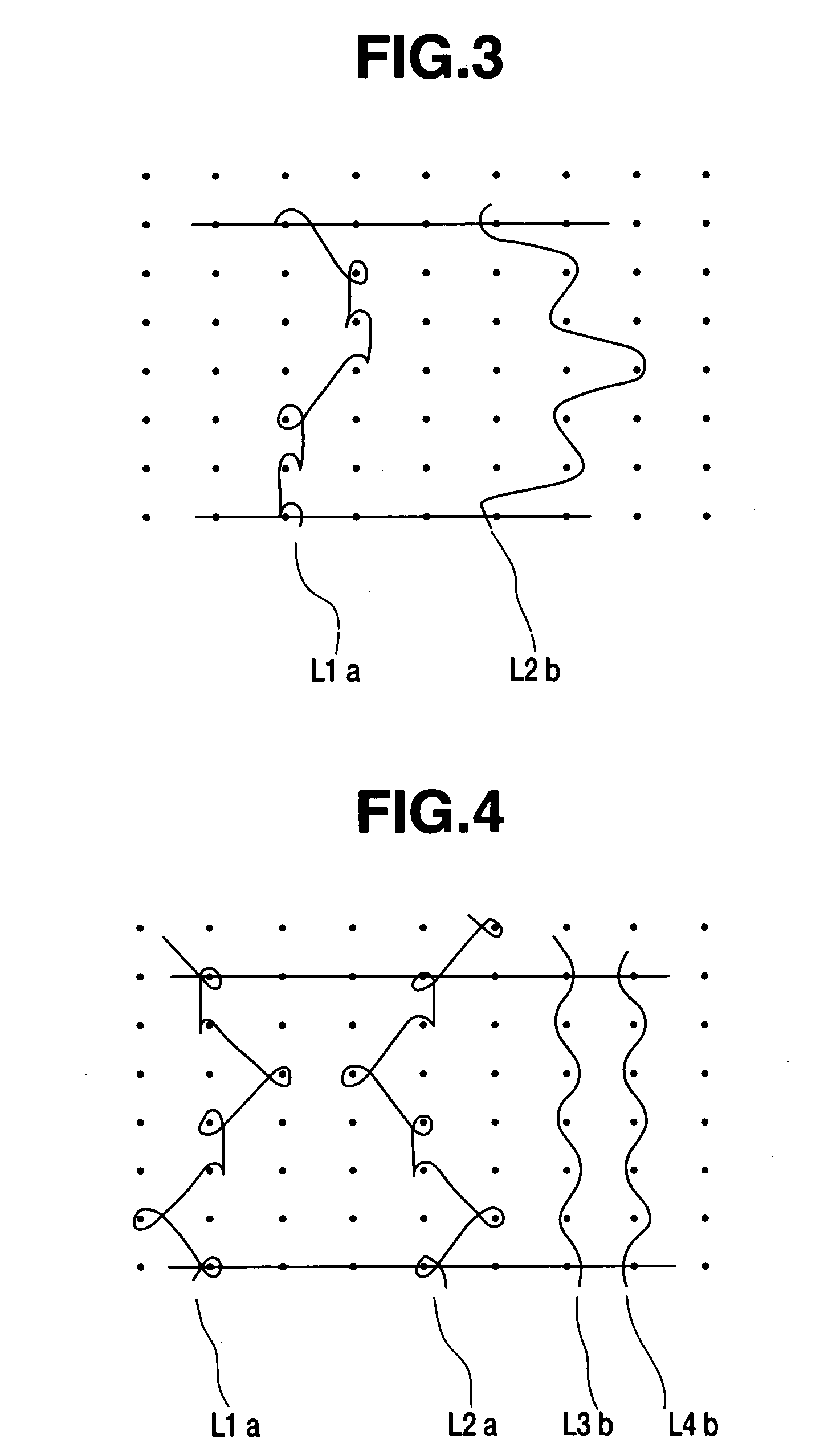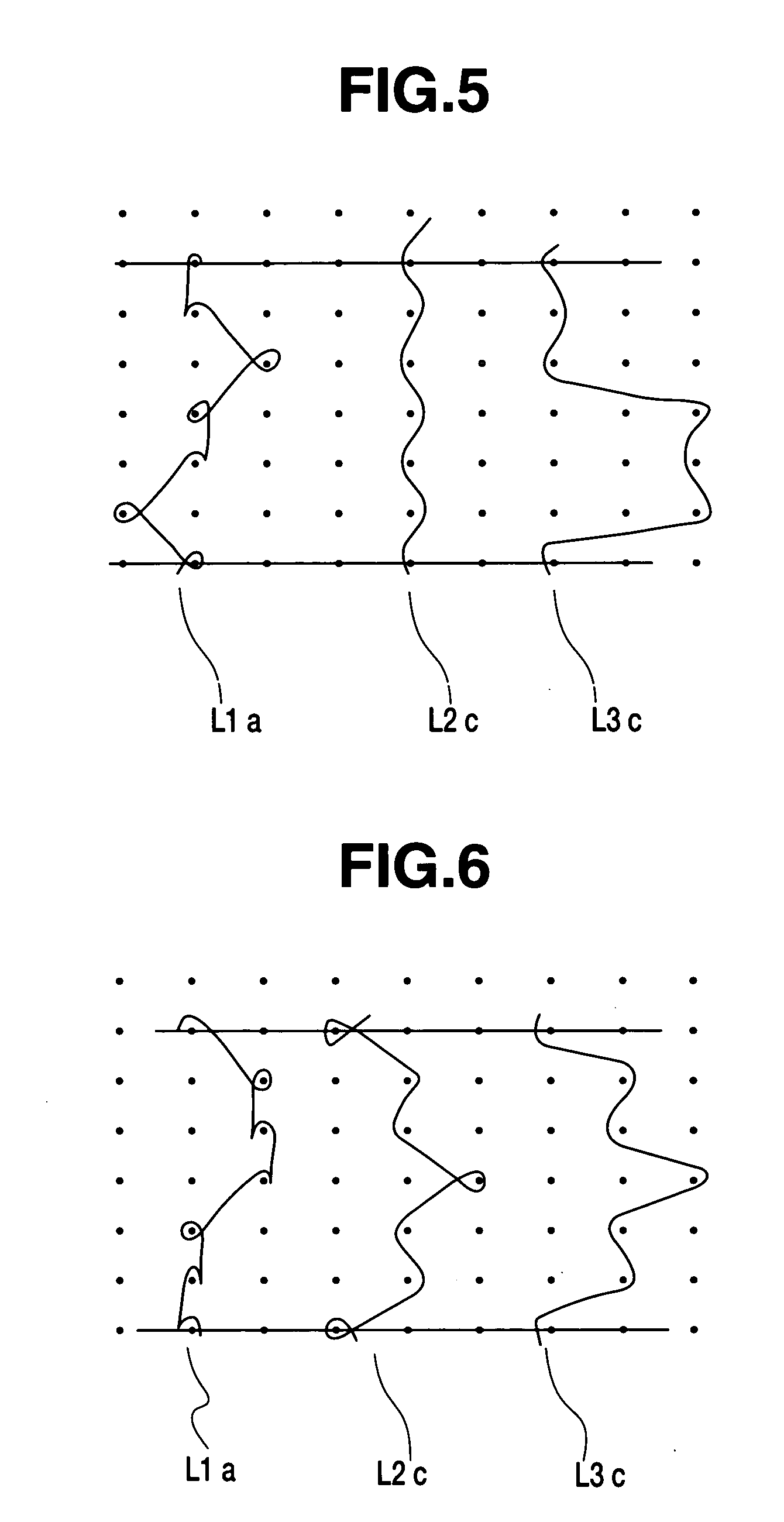Blended woven or knitted fabrics containing polyerethane elastic fibers and process for the production thereof
a technology of polyurethane elastic fibers and which is applied in the field of blended woven or knit fabrics, can solve the problems of yarn slippage, deformation, deformation, and slipping of yarn, and achieve the effects of reducing the number of woven or knitted fabrics
- Summary
- Abstract
- Description
- Claims
- Application Information
AI Technical Summary
Benefits of technology
Problems solved by technology
Method used
Image
Examples
example 1
[0119] The following isocyanate-terminated prepolymer and hydroxy-terminated prepolymer were prepared as the starting materials for the production of polyurethane elastic filaments.
[0120] Synthesis of Hydroxy-Terminated Prepolymer
[0121] A reactor sealed with nitrogen and equipped with a 80° C. warm-water jacket was charged with 25 parts of 4,4′-diphenylmethane diisocyanate (MDI) as the diisocyanate, following which 100 parts of polytetramethylene ether glycol (PTMG) having a number-average molecular weight of 2,000 was added under stirring as the polymer diol. After one hour of reaction, 27.6 parts of 1,4-butanediol was added as the low-molecular-weight diol, thereby forming a hydroxy-terminated prepolymer.
[0122] Synthesis of Isocyanate-Terminated Prepolymer
[0123] A nitrogen-sealed 80° C. reactor was charged with 47.4 parts of MDI as the diisocyanate and 2.2 parts of a mixture composed of an ultraviolet absorber (2-(3,5-di-t-amyl-2-hydroxyphenyl)benzotriazole: 20%), an antioxida...
example 2
[0142] Aside from using polyethylene glycol adipate having a number-average molecular weight of 2,000 instead of PTMG, polyurethane elastic filament made with polyester diol was obtained in the same way as in Example 1. The isocyanate group content of the polyurethane elastic filament immediately after discharge from the spinneret was 0.45 wt %. Measurement of the physical properties carried out as in Example 1 showed that the resulting 44-dtex polyurethane elastic filament had a melting point of 170° C. and 62% retention of tenacity under heating.
[0143] Using the elastic filament, a knitted fabric was produced in the same way as in Example 1. The unraveling tension of the knitted fabric after it had been heat set was measured. The results are shown in Table 1.
example 3
[0149] A knit fabric produced by the method described below using the polyurethane elastic filament obtained in Example 1 was heat set, then subjected to a laundering test, following which the fabric was visually inspected for fraying, slip-in and the surface properties. The results are shown in Table 2.
[0150] Production of Knit Fabric
[0151] A knit fabric having a plated structure was produced by feeding false-twisted Z-twist 33 dtex, 10 filament nylon-6 yarn to yarn feeders 1 and 3, feeding false-twisted S-twist 33 dtex, 10 filament nylon-6 yarn to feeders 2 and 4, and also feeding polyurethane elastic filaments to all four feeders on a pantyhose knitting machine (Lonati, 400 needles). The knit-in ratio was set at 2.5.
[0152] Heat Setting
[0153] The knitted fabric was dry heat treated for 1 minute in a dryer held at 180° C.
[0154] Laundering Test
[0155] Specimens measuring 15×20 cm were cut from the knit fabric after it had been heat set. The specimens were repeatedly washed (20 ...
PUM
| Property | Measurement | Unit |
|---|---|---|
| Temperature | aaaaa | aaaaa |
| Temperature | aaaaa | aaaaa |
| Fraction | aaaaa | aaaaa |
Abstract
Description
Claims
Application Information
 Login to View More
Login to View More - R&D
- Intellectual Property
- Life Sciences
- Materials
- Tech Scout
- Unparalleled Data Quality
- Higher Quality Content
- 60% Fewer Hallucinations
Browse by: Latest US Patents, China's latest patents, Technical Efficacy Thesaurus, Application Domain, Technology Topic, Popular Technical Reports.
© 2025 PatSnap. All rights reserved.Legal|Privacy policy|Modern Slavery Act Transparency Statement|Sitemap|About US| Contact US: help@patsnap.com



